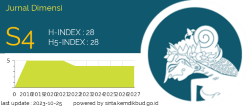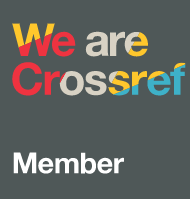MODERN PARENTING CHALLENGES: PARENTS-CHILD COMMUNICATION BARRIERS AND SOLUTIONS IN THE DIGITAL ERA
Abstract
Keywords
Full Text:
PDFReferences
Abdullahi, S. A., Judith, O. C., & Okan, O. W. (2024). The Integration of Technology on Family Dynamics and Communication Pattern. ALSYSTECH Journal of Education Technology, 3(1), 28–36. https://doi.org/10.58578/alsystech.v3i1.3892
Alonso-Stuyck, P., & Aliaga, F. M. (2017). Demanda de autonomía en la relación entre los adolescentes y sus padres: normalización del conflicto. Estudios Sobre Educación, 33, 77–101. https://doi.org/10.15581/004.33.77-101
Alonso Ruiz, R. A., de Jubera Ocón, M. S., Valdemoros San Emeterio, M. Á., & de León Elizondo, A. P. (2022). Digital Leisure: An Opportunity for Intergenerational Well-Being in Times of Pandemic? Journal of New Approaches in Educational Research, 11(1), 31–48. https://doi.org/10.7821/naer.2022.1.806
Ambarwati, A., . M., & Wahyuni, S. (2020). Doing Humor, Seriously!: Conflict Management of Mother and Child through the Humor in the Stories of Lupus Kecil. KnE Social Sciences. https://doi.org/10.18502/kss.v4i10.7407
Anisti, A., Tambunan, R. M., Sidharta, V., Sampean, S., & Syatir, S. (2023). Family Communication Patterns In The Era Digital Technology. ARRUS Journal of Social Sciences and Humanities, 3(6), 750–756. https://doi.org/10.35877/soshum2225
Büchau, S., Schober, P. S., & Becker, D. (2023). Couples’ Communication Behaviour and the Gender Division of Family Work Across the Transition to Parenthood. Journal of Family Issues, 44(4), 909–929. https://doi.org/10.1177/0192513X211055111
Carlos, F. S., de Oliveira Denardin, L. G., Martins, A. P., Anghinoni, I., de Faccio Carvalho, P. C., Rossi, I., Buchain, M. P., Cereza, T., de Campos Carmona, F., & de Oliveira Camargo, F. A. (2020). Integrated crop–livestock systems in lowlands increase the availability of nutrients to irrigated rice. Land Degradation & Development, 31(18), 2962–2972. https://doi.org/10.1002/ldr.3653
Cholifah, R. N., Nurhayati, S., & Fitriana, W. (2023). Pendampingan Mental Berbasis Pendekatan Spiritual Bagi Anak Dan Remaja Keluarga Broken Home. Comm-Edu (Community Education Journal), 6(1), 52–62.
Ellis, B. H., Alisic, E., Reiss, A., Dishion, T., & Fisher, P. A. (2014). Emotion Regulation Among Preschoolers on a Continuum of Risk: The Role of Maternal Emotion Coaching. Journal of Child and Family Studies, 23(6), 965–974. https://doi.org/10.1007/s10826-013-9752-z
Enns, L. N., Barrieau, L. E., Stack, D. M., Serbin, L. A., Ledingham, J. E., & Schwartzman, A. E. (2016). Verbal and nonverbal communication in at-risk mother-child dyads: Implications for relationship quality and developing positive social behaviours in middle-childhood. European Journal of Developmental Psychology, 13(1), 1–19. https://doi.org/10.1080/17405629.2015.1049153
Gath, M., McNeill, B., & Gillon, G. (2023). Preschoolers’ screen time and reduced opportunities for quality interaction: Associations with language development and parent-child closeness. Current Research in Behavioral Sciences, 5, 100140. https://doi.org/10.1016/j.crbeha.2023.100140
Harahap, N. H., Rahmayanty, D., , A., Pratama, A. W., & Afdhol, R. S. (2023). Effective Communication in Building Relationships Between Parents and Children. Edumaspul: Jurnal Pendidikan, 7(2), 3699–3707. https://doi.org/10.33487/edumaspul.v7i2.7018
HAYAKAWA, S., & MIYAHARA, K. (2024). Empathy through Listening. Journal of the American Philosophical Association, 1–16. https://doi.org/10.1017/apa.2024.12
Heryanti, Y., & Nurhayati, S. (2023). Nurturing Self-Esteem in Early Childhood: A Novel Approach Through Parent-Teacher Collaboration in Positive Parenting. Journal of Education Research, 4(4), 1974–1981.
Hodson, N., Woods, P., Solano, J. L., Talbot, C., & Giacco, D. (2024). Evaluating a Mobile App Supporting Evidence-Based Parenting Skills: Thematic Analysis of Parent Experience. JMIR Pediatrics and Parenting, 7, e53907–e53907. https://doi.org/10.2196/53907
Ibañez, L. V., Kobak, K., Swanson, A., Wallace, L., Warren, Z., & Stone, W. L. (2018). Enhancing interactions during daily routines: A randomized controlled trial of a web‐based tutorial for parents of young children with ASD. Autism Research, 11(4), 667–678. https://doi.org/10.1002/aur.1919
Istiani, N., & Firdaus, A. A. (2024). Muslim Learners’ Self-Confidence Building in Public Spaces: Study of Cheerful Wednesday Program at SMP Negeri 7 Pekalongan. TATHO: International Journal of Islamic Thought and Sciences, 1(4), 216–226. https://doi.org/10.70512/tatho.v1i4.45
Iswahyudi, M. S., Wulandari, R., Samsuddin, H., Sukowati, I., Nurhayati, S., Makrus, M., Amalia, M. M., Faizah, H., Febianingsih, N. P. E., & others. (2023). Buku Ajar Metodologi Penelitian. PT. Sonpedia Publishing Indonesia. https://buku.sonpedia.com/2023/09/buku-ajar-metodologi-penelitian.html
Jamlean, A., & Puah, E. (2024). ALONE TOGETHER MENURUT SHERRY TURKLE DAN RELEVANSINYA BAGI KEHIDUPAN GEREJA DAN MASYARAKAT. Pineleng Theological Review, 1(2), 171–193. https://doi.org/10.53396/pthr.v1i2.392
Kusmiatiningsih, E., Nurhayati, S., & Ansori, A. (2024). Fostering Early Childhood Independence Through Positive Parenting Programs. PAUD Lectura: Jurnal Pendidikan Anak Usia Dini, 7(2), 38–50.
Lee, S., McHale, S. M., Crouter, A. C., Kelly, E. L., Buxton, O. M., & Almeida, D. M. (2017). Perceived time adequacy improves daily well-being: day-to-day linkages and the effects of a workplace intervention. Community, Work & Family, 20(5), 500–522. https://doi.org/10.1080/13668803.2017.1365691
Lippke, S., Derksen, C., Keller, F. M., Kötting, L., Schmiedhofer, M., & Welp, A. (2021). Effectiveness of Communication Interventions in Obstetrics—A Systematic Review. International Journal of Environmental Research and Public Health, 18(5), 2616. https://doi.org/10.3390/ijerph18052616
Lippold, M. A., McDaniel, B. T., & Jensen, T. M. (2022). Mindful Parenting and Parent Technology Use: Examining the Intersections and Outlining Future Research Directions. Social Sciences, 11(2), 43. https://doi.org/10.3390/socsci11020043
McDaniel, B. T., & Radesky, J. S. (2018). Technoference: Parent Distraction With Technology and Associations With Child Behavior Problems. Child Development, 89(1), 100–109. https://doi.org/10.1111/cdev.12822
Mendoza, N., & Fruhauf, C. (2019). GRANDPARENT CAREGIVERS: THE RELATION BETWEEN SOCIAL NETWORKS AND RESILIENCE. Innovation in Aging, 3(Supplement_1), S678–S679. https://doi.org/10.1093/geroni/igz038.2507
Moreno, M. (2016). Media Use in School-Aged Children and Adolescents. Pediatrics, 138(5). https://doi.org/10.1542/peds.2016-2592
Mullis, M. D., Kastrinos, A., Wollney, E., Taylor, G., & Bylund, C. L. (2021). International barriers to parent-child communication about sexual and reproductive health topics: a qualitative systematic review. Sex Education, 21(4), 387–403. https://doi.org/10.1080/14681811.2020.1807316
Mulyati, D., Nurhayati, S., & others. (2020). MANAJEMEN PENYULUHAN PARENTING UNTUK MENGURANGI KECANDUAN GADGET ANAK–ANAK USIA SEKOLAH RW 30 CIMINDI HILIR CIMAHI SELATAN. Comm-Edu (Community Education Journal), 3(3), 253–260.
Murniati, B., & Nurhayati, S. (2024). Early Childhood Care and Education Institutions’ Innovative Strategies to Boost Father Participation in Parent Classes. Jurnal Ilmiah Profesi Pendidikan, 9(1), 345–352. https://doi.org/10.29303/jipp.v9i1.1861
Musa, S., Nurhayati, S., Muhyiddin, Y., & Siswanto. (2024). Evaluation of Digital Literacy Training Program Intended for Parental Digital Skills Improvement in Reference to Child Upbringing in a Rapidly Changing Digital Era. International Journal of Applied Engineering and Technology, 1(VI), 617–627.
Nelson, L. R., & Colaner, C. W. (2020). Fostering “Family”: Communication Orientations in the Foster Parent-Child Relationship. Western Journal of Communication, 84(4), 476–498. https://doi.org/10.1080/10570314.2020.1734231
Ning, P. (2022). How Does Authoritarian Parenting Style Influence Adolescents in China? Journal of Student Research, 11(4). https://doi.org/10.47611/jsrhs.v11i4.3663
Nurhayati, S., Kurnianta, P. D. M., & Anggraeni, A. F. (2024). Pengantar Karya Tulis Ilmiah. PT. Sonpedia Publishing Indonesia.
Nurhayati, S., Noor, A. H., Musa, S., Jabar, R., & Abdu, W. J. (2022). A digital literacy workshop training model for child parenting in a fourth industrial era. HighTech and Innovation Journal, 3(3), 297–305.
Nurhayati, S., Nugraha, W. A., & Solihah, H. (2021). Needs analysis of childrens’ right curriculum for parenting education. 5th International Conference on Early Childhood Education (ICECE 2020), 278–282.
Nurhayati, S., & Rosita, T. (2020). Positive Parenting Training Program Implementation to Increase Parents’ Emotional Intelligence in Raising Well Being Children. The 1st International Conference on Early Childhood Care Education and Parenting (ICECCEP 2019), 1(SEAMEO), 67.
Nurhayati, S., & Rumsari, C. (2020). Social Skill Development In The Game Oray-orayan Traditional Children Of West Java. The 2nd International Conference on Science Education in Industrial Revolution 4.0 (ICONSEIR 2019), ISBN 978-1-63190-252-9 ISSN 2593-7650, https--eudl.
Nurislam, J. S., & Nurhayati, S. (2023). DAMPAK EDUKASI BATASAN DIRI PEMUDA MELALUI MEDIA SOSIAL PADA AKUN INSTAGRAM@ FIKSI_SILIWANGI. Jurnal Pendidikan Dan Pemberdayaan Masyarakat (JPPM), 10(02), 206–212. https://doi.org/https://jppm.ejournal.unsri.ac.id/index.php/jppm/article/view/10/10
Pechmann, C., Catlin, J. R., & Zheng, Y. (2020). Facilitating Adolescent Well‐Being: A Review of the Challenges and Opportunities and the Beneficial Roles of Parents, Schools, Neighborhoods, and Policymakers. Journal of Consumer Psychology, 30(1), 149–177. https://doi.org/10.1002/jcpy.1136
Petrova, K., & Schulz, M. (2021). Emotional experiences in technology-mediated and in-person interactions: An experience-sampling study. https://doi.org/10.31234/osf.io/2teu5
Ratningsih, O., Sadiah, R. A., Nurhayati, S., & Widiastuti, N. (2021). Father Parenting Role in the Child’S Social-Emotional Development. Empowerment : Jurnal Ilmiah Program Studi Pendidikan Luar Sekolah, 10(2252), 47–53.
Rumsari, C., & Nurhayati, S. (2020). Parent Involvement in Instilling Social Care Attitudes to Early Childhood Through the Friday Blessing Program. Empowerment: Jurnal Ilmiah Program Studi Pendidikan Luar Sekolah, 9(2), 306–312.
Sholihah, H., & Nurhayati, S. (2024). Child Protection in the Digital Age Through Education in the Islamic Educational Environment. JIE (Journal of Islamic Education), 9(1), 200–218. https://doi.org/10.52615/jie.v9i1.353
Suryani, Y., & Nurhayati, S. (2024). Assessing the Impact of Parenting Styles on Teen Independence in Rural Contexts. Jurnal Ilmiah Profesi Pendidikan, 9(2), 1068–1075. https://doi.org/https://doi.org/10.29303/jipp.v9i2.2248
Tammisalo, K., & Rotkirch, A. (2022). Effects of information and communication technology on the quality of family relationships: A systematic review. Journal of Social and Personal Relationships, 39(9), 2724–2765. https://doi.org/10.1177/02654075221087942
Tomette, A., Henderson, J. N., Hass, A., Carson, L. D., & King, K. (2020). Parental Stress as a Child With Diabetes Transitions From Adolescence to Emerging Adulthood. Journal of Patient Experience, 7(3), 365–371. https://doi.org/10.1177/2374373519842963
Tustonja, M., Topić Stipić, D., Skoko, I., Čuljak, A., & Vegar, A. (2024). ACTIVE LISTENING – A MODEL OF EMPATHETIC COMMUNICATION IN THE HELPING PROFESSIONS. Medicina Academica Integrativa, 1(1), 42–47. https://doi.org/10.47960/3029-3316.2024.1.1.42
Valadi, S., Gabbard, C., & Hooshyari, F. (2020). Effects of affordances in the home environment on children’s personal‐social, problem‐solving, and communication skills. Child: Care, Health and Development, 46(4), 429–435. https://doi.org/10.1111/cch.12756
Wajahat, A. (2024). Social media and it’s Impact on Nonverbal Communication. International Journal For Multidisciplinary Research, 6(3). https://doi.org/10.36948/ijfmr.2024.v06i03.23102
Walper, S., & Kreyenfeld, M. (2022). The Intensification of Parenting in Germany: The Role of Socioeconomic Background and Family Form. Social Sciences, 11(3), 134. https://doi.org/10.3390/socsci11030134
DOI: https://doi.org/10.33373/dms.v14i1.7382
Refbacks
- There are currently no refbacks.

This work is licensed under a Creative Commons Attribution 4.0 International License.











